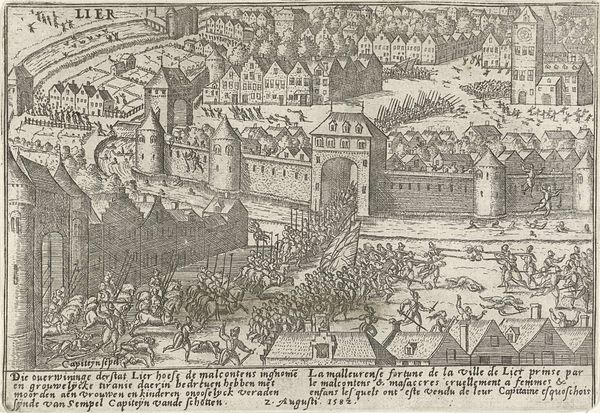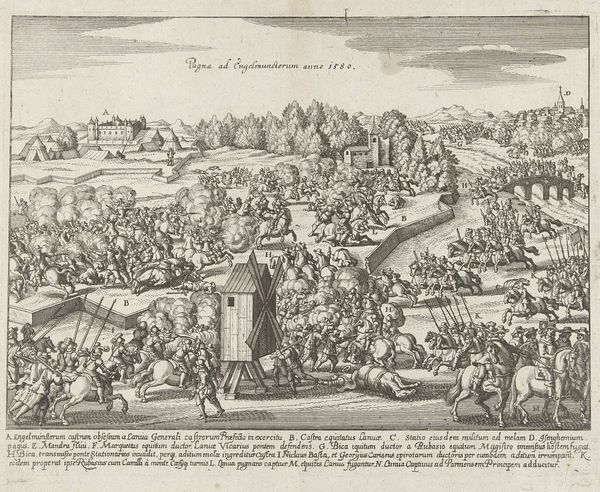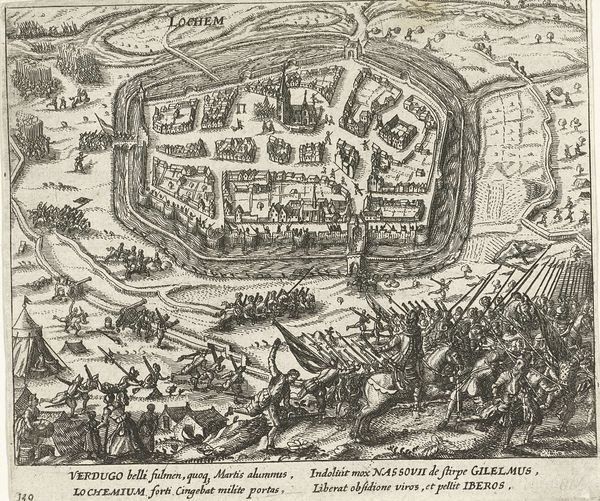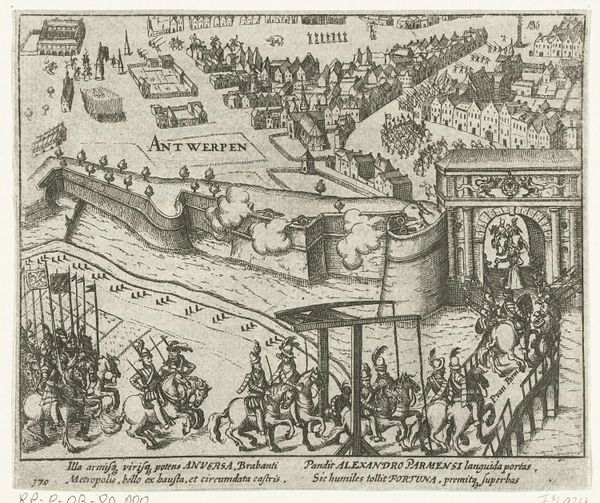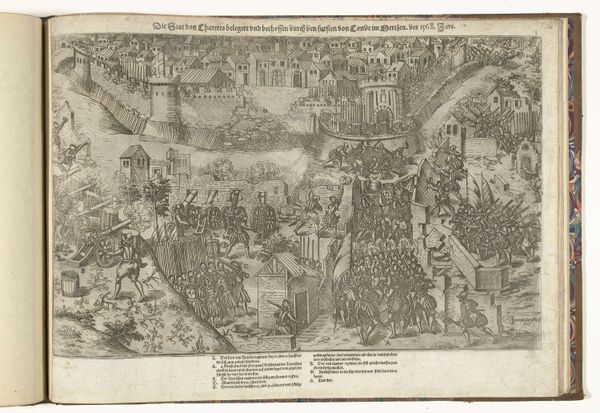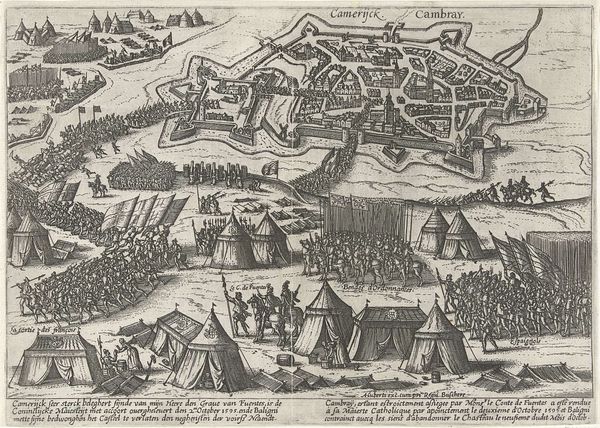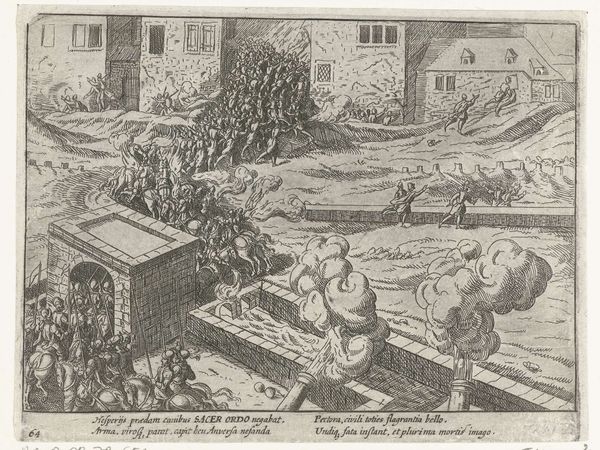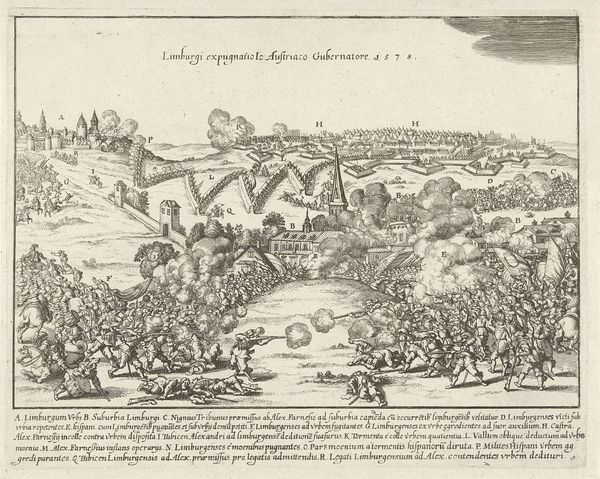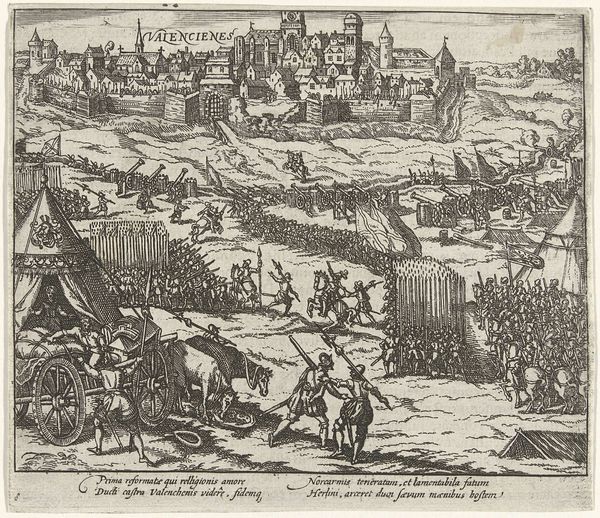
Verovering van Le Cateau-Cambrésis door de hertog van Anjou, 1581 1610 - 1615
0:00
0:00
print, engraving
#
narrative-art
#
baroque
# print
#
old engraving style
#
landscape
#
perspective
#
figuration
#
line
#
cityscape
#
history-painting
#
engraving
Dimensions: height 121 mm, width 167 mm
Copyright: Rijks Museum: Open Domain
Curator: Look at this impressive engraving! It's a work created anonymously between 1610 and 1615 titled "Verovering van Le Cateau-Cambrésis door de hertog van Anjou, 1581" – or, in English, "Conquest of Le Cateau-Cambrésis by the Duke of Anjou, 1581." Editor: My first thought is the stark contrast. The dark lines etched into the light paper give the whole scene a very dramatic, almost apocalyptic, feel, despite being such a relatively small print. What are your initial observations? Curator: What immediately grabs me is the layering of imagery and implied meaning. This is more than just a representation of a battle. The scene's meticulous detail suggests that this conquest was not merely a military victory but a statement. Notice the visual rhythm of flags, figures and artillery, and how these symbolic objects coalesce in a triumphant arrangement. Editor: Yes, that visual rhythm speaks to the organization of power and perhaps also suggests an inevitable sense of movement, marching, conquest. Given the artwork was created some years after the actual event, in what ways might political forces have been at play in shaping the reception and meaning of this print? Was the Rijksmuseum always its home? Curator: Intriguing question! As a historical record and a work of art, its message might have shifted significantly through time. Back then, this would have served as propaganda, visually justifying actions through potent iconography, but for later viewers the print carries a different significance: one of collective memory, of repeated victory through careful selection and idealization of events. I like how the buildings and cityscape have symbolic roles as reminders of order imposed over chaotic landscapes, where human endeavours shape geographical terrain. Editor: I am wondering if we can unpack further the buildings, the landscape and those rows of soldiers. They appear incredibly regimented, reduced almost to a pattern. They're not presented as individual actors but part of this inexorable military force. Curator: Exactly! You see the blend of social history and symbolic representation here: lines of infantry with spears represent force and order, with emphasis given to strategic planning as a path to dominion, both for the viewer and for its historical audience. There is much potency imbued into familiar visual icons of power. Editor: Fascinating! It reminds us that even seemingly straightforward historical images carry layered cultural messages, revealing the complex relationship between historical events, artistic representation, and social values. Curator: Precisely. This unassuming print offers a wealth of insight into not just military history, but into the very construction of power itself.
Comments
No comments
Be the first to comment and join the conversation on the ultimate creative platform.
